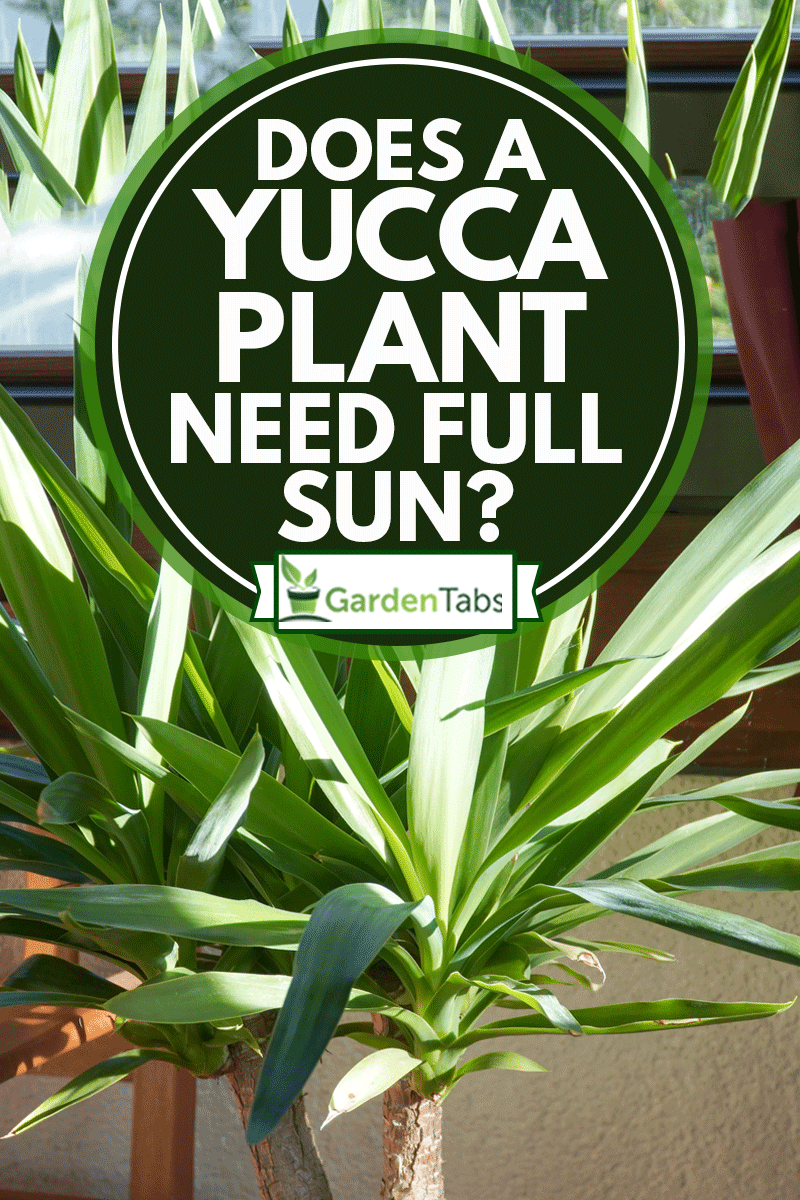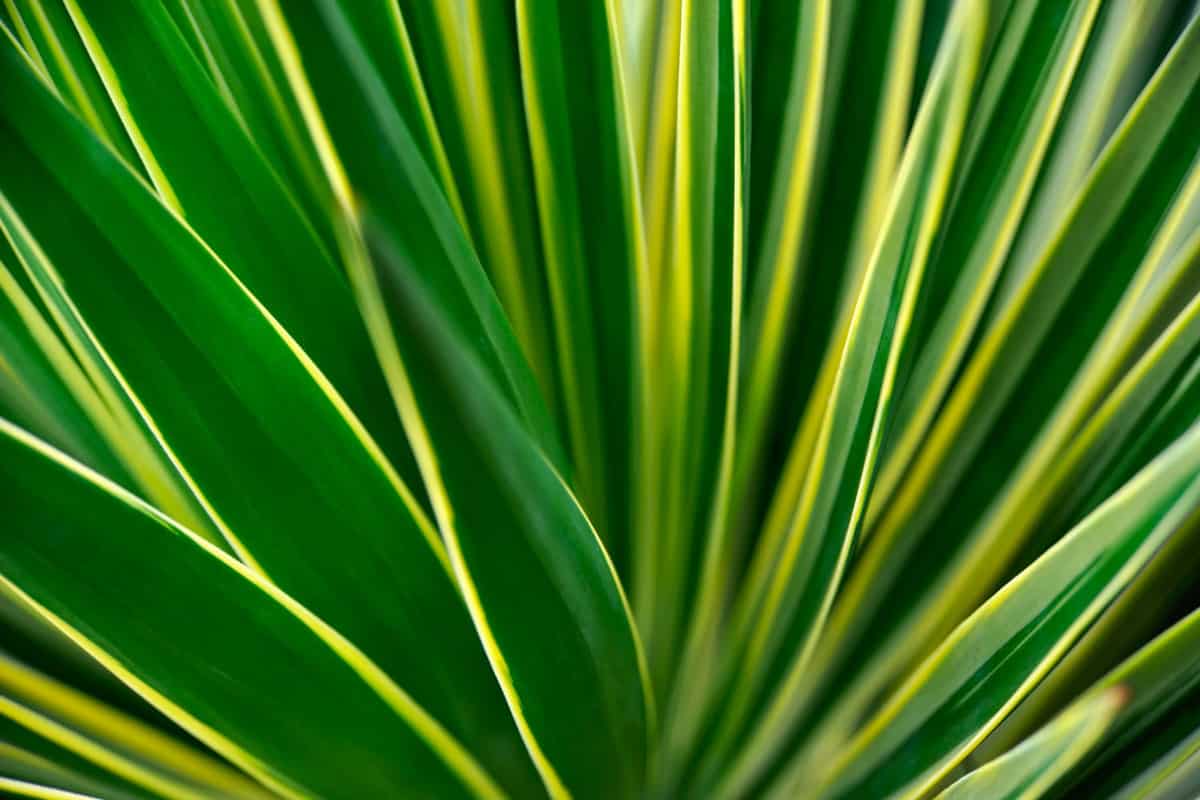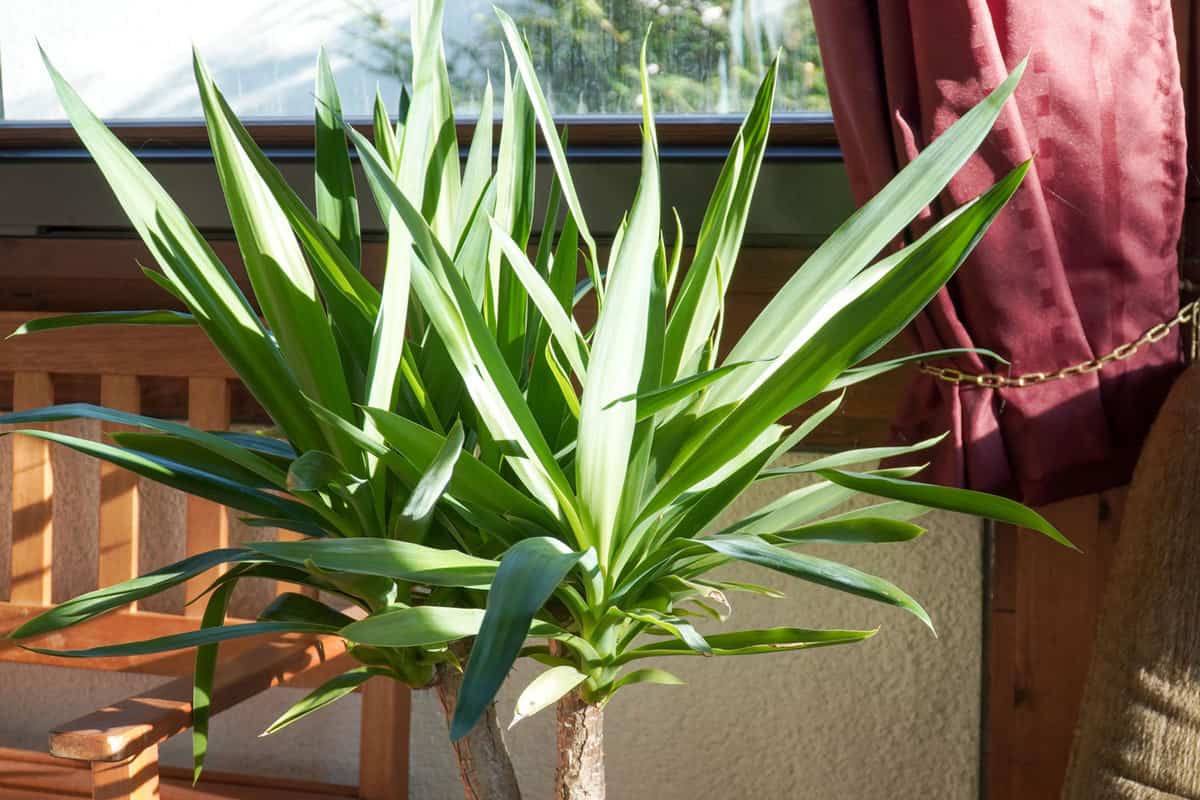Yuccas, sometimes mixed up with cassava, are super tough and can thrive both indoors and outdoors. As robust succulents, they can handle a lot more neglect than your average houseplant.
So, do they need to bask in full sun all day to stay happy? We've dug into all things yucca to bring you the scoop on growing and caring for these cool, hardy succulents. Stick around, and we'll clear up the full sun question for you.

Sunlight Requirements For Yuccas

If there is one rockstar type of succulents, it's definitely the yucca plant. Though yuccas are notoriously easy to grow, they require direct or at least partial sunlight to grow larger.
Placing these plants in a prime location indoors will make them flourish with little effort. They will produce white creamy flowers during mid to late summer when exposed to full sun for a few hours a day.
A sunny to partial shade location when planting them indoors is ideal. Keep a lookout, though, for any white or browning tips on the leaves for any signs of sun-related stress.
When grown in the right environment, these plants can grow up to 10 feet tall. Their leaves can reach about one to three feet in length.
Which Yucca Plants Grow In Shade?
If you have a yucca variety that has shade-tolerance, as is the Arkansas yucca, then you can definitely plant it in an area of your home that doesn't receive much sunlight.
The Arkansas yucca plant is a small shrub that grows to about one or two-feet high—so it won't get as tall as sun-loving yuccas. However, to ensure a full springtime bloom, you'll need to expose it to full sun for at least a few hours a day to grow.
If you don't care about the plant flowering, you can still plant the shrub in a shaded area, where it will still grow. Keep in mind, however, that it'll need less water than a sun-loving yucca—which doesn't require much sun itself.
Most yucca plants grown exclusively in partial shade may suffer from stunted growth. This means that their branches may not be as full, and their leaves may not grow to their full potential.
Place the plant preferably in an area where they receive anywhere from three to six hours of direct sunlight throughout the day. Also, yuccas prefer real sunlight as opposed to artificial sunlight from indoor plant light.
Check out this watering pot on Amazon.
Where Is The Best Place To Plant A Yucca?

It's best to plant most yucca varieties near a window or patio door. Other areas where they can receive direct sunlight throughout the day will also do.
Even if the area only receives a few hours of direct sunlight and then partial or filter sunlight for the remainder of the day, this is enough for the plant to get the nutrients that it needs.
Consider placing your yucca outside on a south or west-facing patio. Or, if you plan to place it in a front living or dining room, be sure to leave any curtains or other window dressings open so that the plant is exposed to direct sun.
How Do You Know If A Yucca Is Dying?
Though yuccas are easy plants to grow and have a high tolerance for neglect, they can suffer from diseases just like any other plant. Here are a few tell-tale signs to determine if the succulent needs a little TLC.
Wilted leaves with white or yellow spots
Too much sun can also be a bad thing for the yucca plant. If you notice any yellow or white spots appearing on the its leaves, it may be receiving too much direct sun daily.
To ensure the health of your plant, gradually acclimate it to new conditions. Transitioning it directly from a low-light environment to prolonged exposure to direct sunlight can cause harm.
You may also notice that the leaves contain burn marks on their tips. It's always best to slowly acclimate yuccas to new environments to prevent them from becoming stressed.
Spots on leaves or branch disfiguration
Dark or light spots on the plant's leaves can be a sign of stress, typically from temperature settings that are not ideal.
On average, a yucca prefers temperatures ranging from 45 to 90 degrees Fahrenheit. Temperatures outside of this can cause the plant to show signs of distress and potentially die.
Also, if you notice that the new growing branches on the plant appear disfigured, this can be a sign of temperature stress. The best way to correct this is to slowly change the environment's temperature each day until it reaches around 70 degrees Fahrenheit on average.
Leaves appear greener, yellow, or fall off
Surprisingly, one sign that a yucca is dying is when the plant's leaves began turning greener. This is a result of overcompensating from being exposed to too little lighting.
Eventually, the leaves will turn yellow, and then they all fall off completely. The best solution for this is to place the plant near a natural light source such as a window or patio door so that it can be exposed to more direct sun on a daily basis.
Withered leaves are dark bark
If the yucca plant is over-fertilized, you may notice that it begins to look sickly and thin. The bark will also appear darker than usual.
Also, if the plants' growth seems stunted while it's receiving a sufficient amount of sunlight per day, this could mean that it is over-fertilized. So, fertilize it no more than once every two to three months during the growing season unless the plant is in a dire state of health.
Yellow or brown leaves
One of the biggest signs that a yucca is dying is when the leaves begin to turn yellow. This is typically a sign of over-watering.
Remember, yuccas are succulents. And like most succulents, they thrive in drought-like condition, which means they can easily become overwatered. If overwatered too often, they may develop root rot, a fungal condition that can quickly kill the plants.
If you notice the leaves turning yellow, it's important to stop watering for the next few weeks until the soil completely dries out. Ensure as well that your plant's pot has proper drainage and not holding water at the bottom of the pot after your watering session.
If you suspect root rot, be sure to replace the soil and place the yucca in a new pot. You also may need fertilizer that should address the condition of the plant.

Learn more about this fertilizer on Amazon.
Do Yuccas Spread?
Depending on your yucca variety, you may find that your plant spreads fairly wide. Mature yuccas can reach up to three feet wide, and they're known to have an extensive root system.
When planting indoors, it's advisable to pot your yucca individually and keep it slightly separated from other plants. Additionally, if you intend to plant it in the ground outdoors, be mindful that once established, it can become challenging to remove.

Check out this plant pot on Amazon.
Wrapping Things Up

We trust this post has clarified your queries regarding the sunlight and shade requirements for yuccas. On the whole, yucca plants require a moderate amount of direct sunlight each day for optimal growth.
Before you go, please be sure to check out these related posts:

